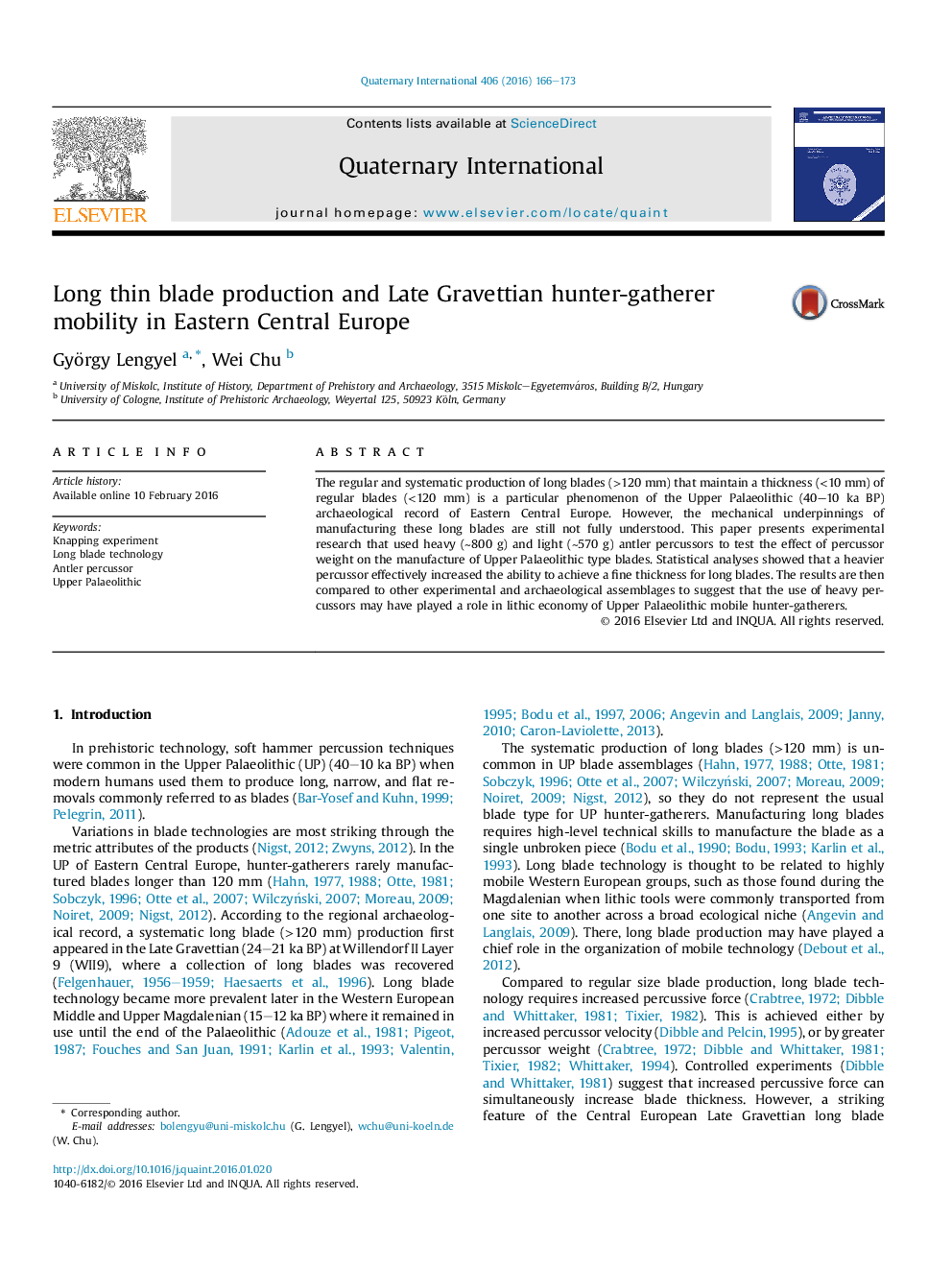| Article ID | Journal | Published Year | Pages | File Type |
|---|---|---|---|---|
| 1039974 | Quaternary International | 2016 | 8 Pages |
The regular and systematic production of long blades (>120 mm) that maintain a thickness (<10 mm) of regular blades (<120 mm) is a particular phenomenon of the Upper Palaeolithic (40–10 ka BP) archaeological record of Eastern Central Europe. However, the mechanical underpinnings of manufacturing these long blades are still not fully understood. This paper presents experimental research that used heavy (∼800 g) and light (∼570 g) antler percussors to test the effect of percussor weight on the manufacture of Upper Palaeolithic type blades. Statistical analyses showed that a heavier percussor effectively increased the ability to achieve a fine thickness for long blades. The results are then compared to other experimental and archaeological assemblages to suggest that the use of heavy percussors may have played a role in lithic economy of Upper Palaeolithic mobile hunter-gatherers.
